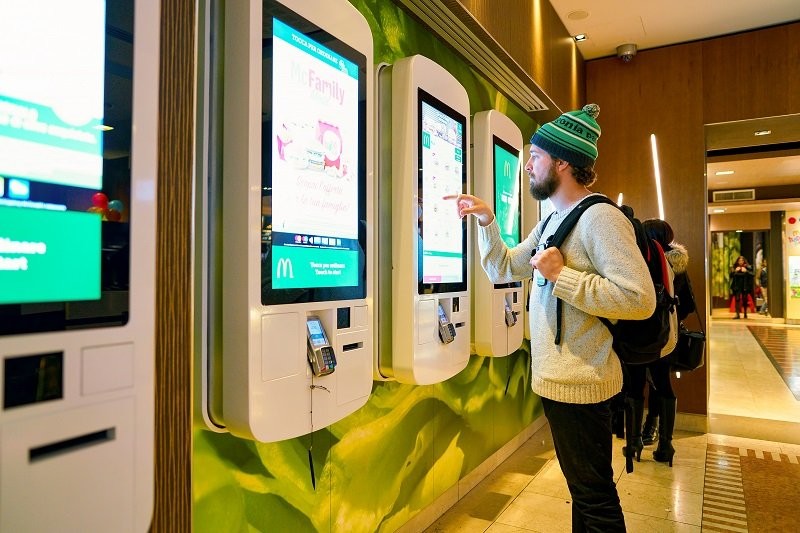Businesses are constantly seeking innovative methods to engage customers and drive conversions. One such strategy that has proven to be highly effective is kiosk marketing. By leveraging interactive kiosks, businesses can not only enhance customer experience but also maximise their return on investment (ROI). In this article, we will explore how kiosk marketing can significantly boost your ROI and offer practical tips on how to implement it effectively.
What is Kiosk Marketing?
Kiosk marketing involves the use of digital kiosks to interact with customers in a physical space, such as retail stores, shopping centres, airports, or trade shows. These kiosks can be used for a variety of purposes, including product information dissemination, interactive advertising, customer feedback collection, and even direct sales transactions. The primary advantage of kiosk marketing is its ability to engage customers in a unique and interactive way, creating a memorable brand experience.
Benefits of Kiosk Marketing
-
Enhanced Customer Engagement: Kiosks offer an interactive platform that allows customers to engage with your brand on their terms. This engagement is more personalised and can lead to higher levels of customer satisfaction and loyalty.
-
Cost-Effective Advertising: Digital kiosks can reduce the need for traditional print advertising, leading to significant cost savings. Additionally, the ability to update content in real-time ensures that your messaging is always relevant and up-to-date.
-
Data Collection and Insights: Kiosks can be equipped with features that collect valuable data on customer preferences and behaviours. This data can then be analysed to inform future marketing strategies and improve overall business performance.
-
Increased Sales Opportunities: By providing customers with easy access to product information and purchase options, kiosks can directly drive sales. They can also offer upselling and cross-selling opportunities, further increasing revenue.
-
Improved Brand Visibility: Kiosks can be strategically placed in high-traffic areas, ensuring maximum visibility for your brand. The interactive nature of kiosks also makes them more likely to attract attention than static advertisements.
How to Maximise ROI with Kiosk Marketing
To achieve the best possible return on investment from your kiosk marketing strategy, consider the following best practices:
-
Strategic Placement: The location of your kiosk is crucial. Place kiosks in high-traffic areas where they are likely to be seen and used by your target audience. Consider locations such as shopping malls, airports, trade shows, and busy retail environments.
-
Content Relevance and Personalisation: Ensure that the content displayed on your kiosks is relevant to your target audience. Personalisation features, such as location-based content or tailored recommendations, can enhance the customer experience and drive engagement.
-
Ease of Use: The kiosk interface should be user-friendly and intuitive. Complicated menus or difficult navigation can deter users, reducing the effectiveness of your kiosk marketing efforts.
-
Regular Content Updates: Keep your content fresh and engaging by regularly updating it. This could include promotions, new product information, or interactive features that encourage repeat usage.
-
Integration with Other Marketing Channels: Kiosk marketing should not exist in isolation. Integrate your kiosks with other marketing channels, such as social media, email marketing, and in-store promotions, to create a cohesive brand experience.
-
Monitoring and Optimisation: Regularly monitor the performance of your kiosks by analysing data such as usage rates, customer feedback, and sales conversions. Use this data to make informed decisions and optimise your kiosk marketing strategy over time.
Case Studies: Successful Kiosk Marketing Campaigns
Several businesses have successfully implemented kiosk marketing to maximise their ROI. For example, a leading retail brand introduced interactive kiosks in their stores, allowing customers to browse products and make purchases directly. This not only increased sales but also enhanced the in-store shopping experience. Another case is of a travel company that used kiosks in airports to offer last-minute holiday deals, resulting in a significant boost in bookings.
These examples illustrate the potential of kiosk marketing to drive tangible business results. By carefully planning and executing your kiosk marketing strategy, you can achieve similar success and maximise your ROI.
Kiosk marketing presents a powerful opportunity for businesses to engage customers, drive sales, and maximise ROI. By focusing on strategic placement, content relevance, ease of use, and continuous optimisation, you can harness the full potential of kiosk marketing. As the digital landscape continues to evolve, integrating kiosks into your broader marketing strategy can provide a competitive edge and ensure your brand remains at the forefront of customer engagement.
Keywords: kiosk marketing, return on investment, ROI, digital kiosks, customer engagement, cost-effective advertising, data collection, sales opportunities, brand visibility, strategic placement, content personalisation, ease of use, marketing channels integration, monitoring and optimisation, case studies, successful kiosk marketing campaigns.



